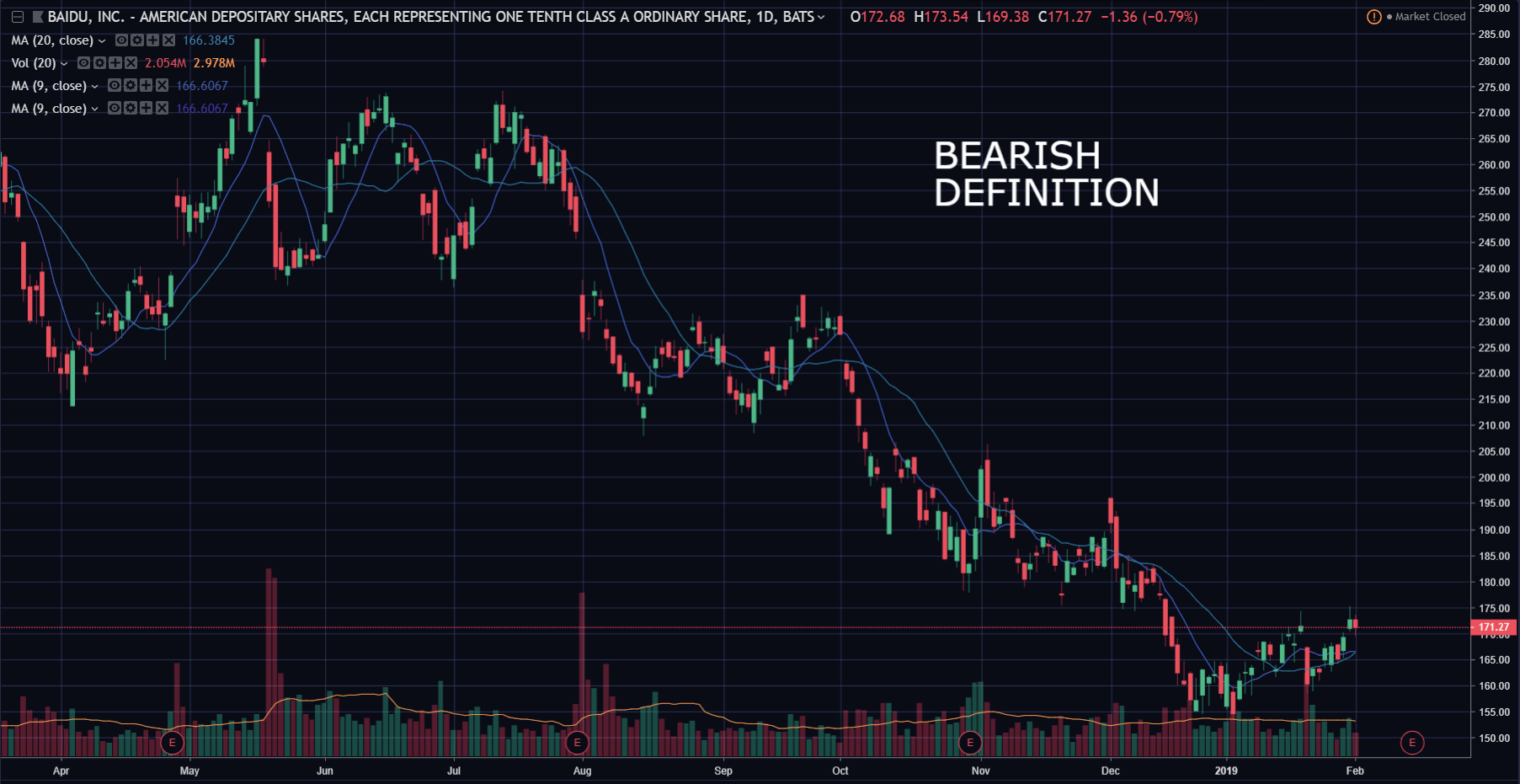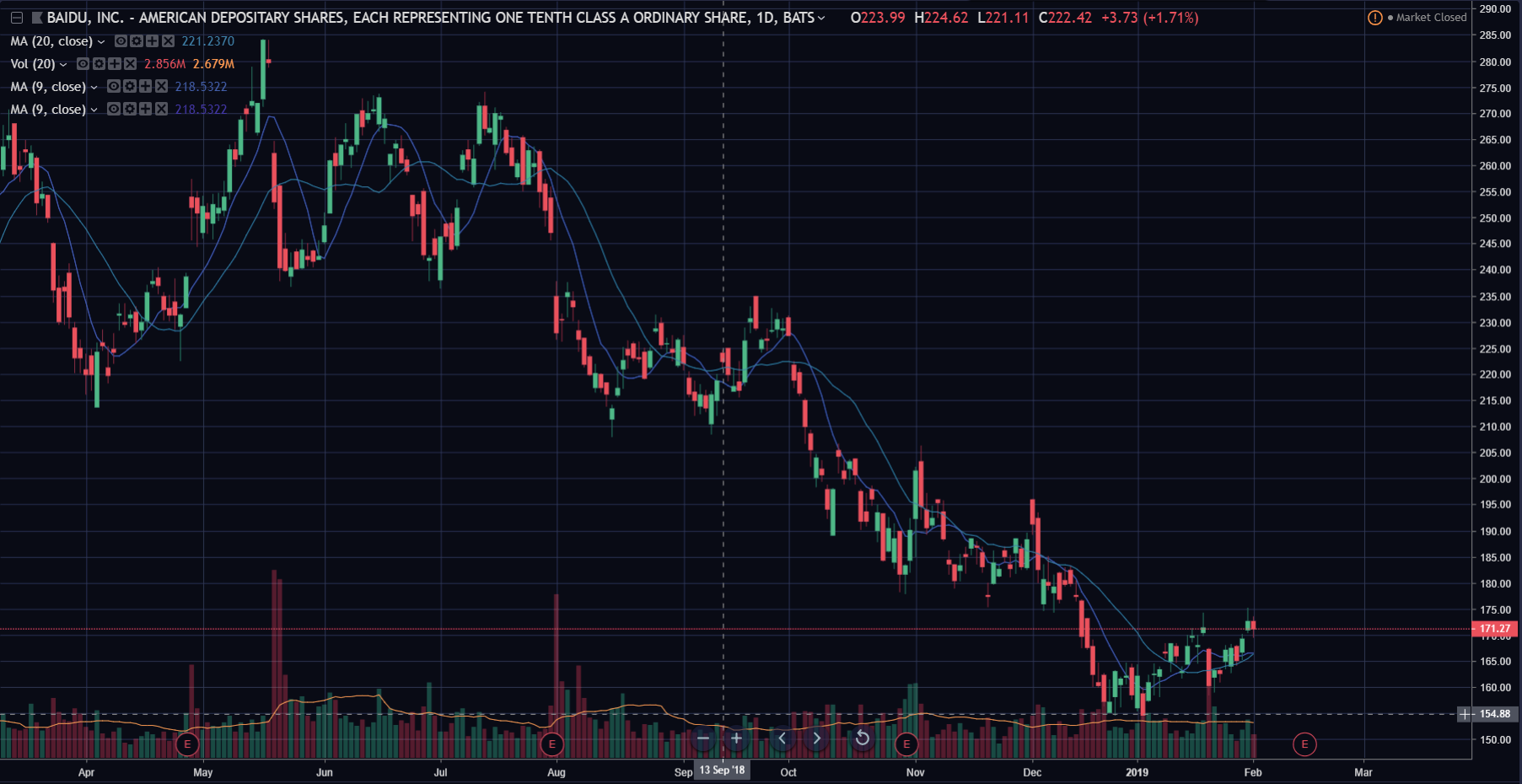 Bearish is a widely used term in the trading world to describe a downtrending market. You will often hear an analyst say on CNBC, “That stock looks bearish” or “That is a bearish signal”. In general, a bear symbolizes contraction in finance, and is the origin of the phrase. A bear market is a way to describe a market that is downtrending, and expected to depreciate in value in the near future.
Bearish Trend Example
Bearish trends are characterized by markets that have more sellers than buyers, and a result the market begins to depreciate. An example of a bearish trend is the BIDU daily chart from the last several months:
Bearish is a widely used term in the trading world to describe a downtrending market. You will often hear an analyst say on CNBC, “That stock looks bearish” or “That is a bearish signal”. In general, a bear symbolizes contraction in finance, and is the origin of the phrase. A bear market is a way to describe a market that is downtrending, and expected to depreciate in value in the near future.
Bearish Trend Example
Bearish trends are characterized by markets that have more sellers than buyers, and a result the market begins to depreciate. An example of a bearish trend is the BIDU daily chart from the last several months:
 You can see how this chart is a consistent set of lower highs, and lower lows. Every attempt to push higher is sold into, and support levels get taken out consistently. Bearish trends are also characterized by strong selling volume upon the break of support, which you can see in the chart above.
Why Do Bear Markets Happen?
A crucial concept to understand in the financial markets is that they are cyclical by nature. A bear market does not last forever, and neither does a bull market. There are actually 4 market cycles that all markets experience, and a bear market is another way to describe the run-down phase. Bear markets traditionally occur every 8-10 years, and it is a completely normal occurrence.
You can see how this chart is a consistent set of lower highs, and lower lows. Every attempt to push higher is sold into, and support levels get taken out consistently. Bearish trends are also characterized by strong selling volume upon the break of support, which you can see in the chart above.
Why Do Bear Markets Happen?
A crucial concept to understand in the financial markets is that they are cyclical by nature. A bear market does not last forever, and neither does a bull market. There are actually 4 market cycles that all markets experience, and a bear market is another way to describe the run-down phase. Bear markets traditionally occur every 8-10 years, and it is a completely normal occurrence.
Bearish Definition: Trading Terminology For Beginners
Share:
Facebook
Twitter
Pinterest
LinkedIn
Stock & Option Software used by Bulls on Wallstreet

Social Media
Related Posts
Stock and Coffee Saturday Morning
December 21, 2024
Market Speculator Part-Time | Swing Trade Report
December 20, 2024
Trading Watch List 12.20.2024
December 19, 2024

Stop Guessing.
Start Trading.
Secured Checkout Providers
- Home
- Live 60-Day Trading Boot Camp
- Day Trading
- Part Time Trading
- Events & Work Shops
- Tc2000
- Tc2000
- About
- Blog
- FAQ
- Contact